Bed mites - House mites
Dust mites have taken up residence in your bedding, in your armchairs? The problem: you can't see them! In this dossier, you'll find a range of answers and products to help you combat this insect, which is omnipresent in our homes.
|
I would like to |
|---|
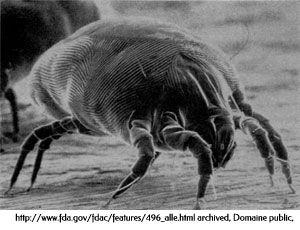 Bed mite (dermatophagoides pteronyssinus)
Bed mite (dermatophagoides pteronyssinus)
House dust mite (glycyphagus domesticus)
Order : mites
Family : Tyroglyphidae
Size : 0.4 mm
Location : any habitat
Period : all year round
What you need to know about bed mites
The bed mite is the most common mite found in homes. Bed mites tend to feed on tiny scraps of skin and mould filaments. House mites, on the other hand, feed mainly on sugary organic matter. They can therefore be found in house dust, but also in all sweet foods and dried fruit.
They are omnipresent in our environment, but their small size means that they often go unnoticed : 1g of dust can contain up to 1,500 mites ! They are tiny animals (0.3 mm) belonging to the Arachnid family, like spiders, rather than insects.
To live, dust mites need a humid (>50%) and warm (>19°) environment. They can live on both natural and synthetic fibres such as mattresses, animal skins, sofas and carpets.
At temperatures >25°C and humidity >75%, dust mites proliferate very quickly, which is why it's important to air living areas regularly.

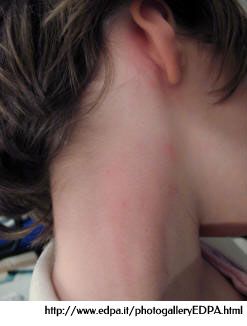
Beware of house dust mites : risk of allergies
House dust mites do not transmit contagious diseases, but they can cause allergic reactions such as chronic colds, bronchial asthma and atopic eczema. The main allergen is found in their droppings, which are suspended in the air, and it is when they come into contact with the skin and respiratory mucosa that the allergy develops.
- the allergy threshold is around 100 mites/g of dust
- 20% of people are sensitised.
- 60% of asthmatics are sensitised.
- 25% of asthmatics have symptoms caused by these arachnids.
Our tests with 4J 1.5% insecticide
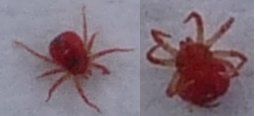 Testing the insecticide on red spider mites Given the small size of house mites (less than 0.5 mm), we were unable to test the effectiveness of our 4J 1.5% insecticide, but we did test it on another type of mite: the red spider mite, which is frequently found on plants in hot, dry weather. After a quick spray, the red spider went from living to dead (see photo).
Testing the insecticide on red spider mites Given the small size of house mites (less than 0.5 mm), we were unable to test the effectiveness of our 4J 1.5% insecticide, but we did test it on another type of mite: the red spider mite, which is frequently found on plants in hot, dry weather. After a quick spray, the red spider went from living to dead (see photo).
We also tested our 4J insecticide on much larger real spiders, but at a concentration of 5%, and each time 100% mortality was observed.
1 - Eliminate house dust by vacuuming regularly (preferable to sweeping).
2 - Wash radiators, windowsills and wardrobes regularly.
3 - Wash bed covers and sheets weekly at 60°C and blankets monthly.
4 - Ventilate rooms daily to reduce relative humidity and temperature. Avoid temperatures > 20°C and humidity > 50%, which is actually healthier.
5 - If you can, prefer:
- smooth leather sofas,
- parquet floors, cork tiles, novilon or PVC,
- cshort-pile synthetic fibre carpets,
- synthetic or cotton blankets,
- mattresses with dust mite-proof covers.
6 - Pay attention to anything that can generate mould, such as potted plants or humidifiers.
7 - Treat regularly with our anti-mite insecticide.
Anti-dust mite cover. Is it really useful ?
Here's what Dr Masson, a "field allergist", has to say (source of the article).
"It's much more effective to get rid of dust mites in your pillow, box spring and duvet.
Even if a mattress cover reduces the quantity of allergens, enough remain in the rest of the bedding to maintain the allergy and asthma.
So I'll continue to advise my patients to put covers on their mattress, pillow, box spring and duvet, because reducing the amount of dust mites in the bedding will help to improve them.
In fact, only specific desensitisation, by increasing the body's resistance to allergy, will really solve their problem."
Warning : when you buy an acaricide, check its composition (see our file on the Pyrethrinoid family)
Can essential oils be used to combat house dust mites ?
Certain essential oils can be very effective in the fight against house dust mites. More precisely, you need to use a blend of essential oils to increase the power of their effects (known as synergy). These essential oils have excellent insect-repellent properties.
Tea tree essential oil is a good example. The monoterpene alcohols it contains (alpha terpineol and terpinen-4-ol) penetrate cells, altering the cell membranes and intracellular constituents of insects. They will thus prevent the insects from developing and cause their death.
Clove essential oil contains Eugenol (similar in action to monoterpene alcohols), a substance recognised for its anti-insect action.
Finally, lavender essential oil completes the formula thanks to the Linalool it contains.
Mix 100 ml of modified alcohol and 15 ml of each of the above essential oils in a small spray bottle. Then spray the surfaces where the mites are present: mattresses, pillows, cushions, carpets. Make sure no-one is in the room and wait at least 1 hour. Finally, once you're back, don't forget to vacuum the room to remove any dead mites, which are always a source of allergies. This operation will probably have to be repeated regularly depending on the results obtained. If it doesn't work, you'll need to switch to more powerful natural insecticides (see below).
How to eliminate mites in a sustainable way ?
A - Use our 4J insecticide at 1.5% because :
- It's a natural pyrethrum-based product that will eliminate the adults.
- By depositing a film (potassium soap) on the waste produced by them (excrement, dust, etc.), it prevents them from becoming airborne. Use 500ml per 5 m² of surface treated.
Proceed as follows :
- Remove sheets to expose mattresses.
- Apply the product to eliminate living mites.
- Air the room and leave the product to dry.
- Clean the room thoroughly with a hoover, preferably fitted with an anti-dust mite filter (vacuuming is important, as excrement and dead mites should not be left on the mattress).
- Pyrethrum does not last long (maximum 2 weeks), so treat regularly and at least every time you change your bed linen.
- Also treat cupboards and wardrobes and possibly carpets.
Do you have a large surface to treat ?
To treat an entire house or large surfaces such as carpets, rugs, bedding, etc., we recommend using a garden sprayer and 4J insecticide in its concentrated form. Make your own preparation by diluting 5% of the insecticide with water. For your information, a 250 ml bottle of 4J concentrated in 5 litres of water will treat 50 m².
B - 2 aerosol products are also effective in treating house dust mites :
- Ecodoo anti-mite spray, formulated with pyrethrum in particular
- Aries anti-mite spray, formulated with neem oil, which works less quickly (compared with pyrethrum), but lasts longer.
C - For peace of mind, after treatment and vacuuming, we recommend you use anti-dust mite deodorising granules. They will not only release delicately scented (mint - eucalyptus) and sanitised air, but will also destroy the dust mites and other parasites in your hoover bag, reducing the risk of allergies in humans and animals.
D - To radically eliminate any surviving dust mites, use the Habitat Biovétol fogger, an automatic diffuser made exclusively from active ingredients of plant origin (available in 3 sizes).
E - Finally bicarbonate of soda is an ideal ally against dust mites for the following reasons :
- Laboratory studies have shown that bicarbonate, whether used as a powder or sprayed with water, is extremely effective against dust mites. For example, just 20g of bicarbonate powder (the finer the bicarbonate, the more effective it is) per square metre of surface area is enough to destroy all the mites in less than 2 hours.
- It's not toxic to us! A grain of bicarbonate that comes into contact with one of our moist mucous membranes (eye, mouth, lungs, etc.) dissolves immediately without irritation. However, the chitin that makes up the mite's shell does not allow the bicarbonate to dissolve, and it will be damaged as soon as contact is made. And as mites are very mobile, they won't be able to avoid spilled bicarbonate for very long !
- Bicarbonate is fungistatic, so it blocks the growth of mould. As moulds are conducive to the development of house dust mites, and also produce allergens themselves through the production of spores, bicarbonate is doubly effective. It acts on both the mite and its biotope.
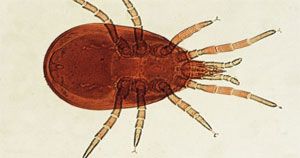
How do I use baking soda to combat dust mites ?
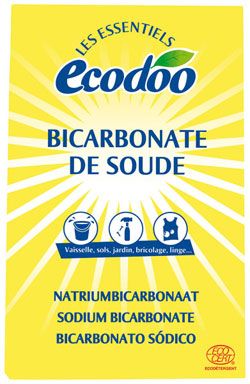
Carpets and mattresses : spread the baking soda powder as evenly as possible (about 20g per square metre or 4 teaspoons). For a single bed, you'll need around 35g and for a 2-person bed around 55g. Brush lightly to distribute and penetrate the fibres. After about 2 hours (4 to 8 hours is best), vacuum up and put the sheets and undersheet back on the mattress.
By spraying or in the washing powder : Baking soda is also very effective against dust mites when diluted in water. Add bicarbonate to warm water until the grains no longer dissolve, then spray on the surface to be treated against dust mites. White marks may appear after drying. These will disappear easily when washed. Spraying ensures even distribution. If the surface is completely moistened, very fine bicarbonate crystals will appear everywhere after drying. When machine washing, adding bicarbonate to the rinse water will delay the reappearance of dust mites.
In the hoover : Vacuuming up bicarbonate (on the carpet, rug or mattress) will neutralise dust mite activity in the hoover. Unfortunately, the allergens already in the bag will not be removed, and it's better to have a hoover with a HEPA filter to avoid dispersing them around the room. But at least with the bicarbonate, the dust mites won't produce any new allergens in the bag! You can also use our anti-dust mite deodorising granules for hoovers.
The products you need to combat house dust mites ?
Go directly to the detailed product sheets, product by product, to combat house dust mites :
*pae: Ready to use
Frequently asked questions about dust mites, cockroaches and red spiders
Q: I'd like to know if an anti-dust mite product exists for mattresses. If so, what do you recommend?
A: We have an insecticide for small insects including mites (4J diluted to 1.5%) that you can use to treat your mattresses, but as this product doesn't last very long, you'll need to use it regularly. We also have other products, this time in aerosol form, to treat house dust mites : Ecodoo House Dust Mite Spray or Aries House Dust Mite Spray.
Q: Is it possible to treat a specific area with your product ? What concentration do you recommend ? Will I have to "sprinkle" or spray the area ?
A: Yes, but to be really effective, it would be preferable for the area to be perfectly mown beforehand (at least for the grass) ? I think 2 to 3% will be sufficient. Watering would be more effective, but a garden sprayer should do the trick.
Q: I'd like to know if your "anti-dust mite" product is safe to use inside the house, in bedding and on all objects in direct contact with my children ? Which product do you recommend ?
A: You'll find several safe products on our site for use in treating dust mites.
Q: I'm looking for a pheromone-based trap for small red spiders, also known as Chigger. Does it exist ?
A: Although red spiders and chigger are both mites and both live in grass, there is no connection between the 2. The red spider (family Tretranychidae) is a plant parasite, whereas the larva of the august mite (Trombidion mites) is a bloodsucker. Apart from that, I don't know of any traps for either of them !
Q: I've just bought a mattress for my unborn baby. This mattress has undergone permethrin-based anti-mite treatment. Your page on this molecule mentions possible neurological damage.
A: Like all pyrethroids, permethrin is active on the nervous system, disrupting the conduction of nerve impulses along axons. Permethrin is not normally toxic to humans, but it is highly toxic to all cold-blooded animals and is not tolerated by cats, where it causes convulsion-like symptoms. Its adverse effects can lead to the death of the animal. (Over a three-year period, the CNITV-Lyon recorded 345 cases of pyrethroid poisoning - some in dogs and cats).
Q: I've got parasites in my kitchen, as small as dandruff, but they're swarming, moving around and even after washing everything with bleach they come back within the hour. Please tell me what I should do.
A: On the face of it, given your description, it looks like mites, but to be sure we need a bit more information: what do they look like, do they fly, are they worms ?
Q: What organic insecticide should I use to treat mites (red spider mites) on a lemon tree? (e.g. 1% 4J insecticide)
A: For regulatory reasons, our products can only be used on houseplants, but in this case you can use the 1% 4J or the 1.5% ready-to-use insecticide.
Q: I've just discovered some tiny white creatures that look like dust, but if you look carefully they move. Could you please tell me what I'm dealing with ?
A: Tiny white creatures that look like dust. On the face of it, they look like mites, but to be sure, we need a bit more information: what do they look like, do they fly, are they worms ?
Q: Do you have anything effective to combat chigger, or at least to avoid being bitten ?
A: Products based on PMD (mosquito repellent) are effective against sucking insects. Our Penntybio body lotion contains this substance.
Q: Hello, my daughter is allergic to dust mites. Apart from careful cleaning, do you think essential oils could help her, and in what form: to swallow, as a vapour or in other ways? Her symptoms: sneezing, especially in the morning, a full nose, lots of nose blowing all year round.
A: Apart from diffusing essential oils to disinfect the air (lemon, lavender, etc.), they won't improve or prevent an allergy.
Q: Concerning insecticides for mites, do they also work on large spiders? I tried a natural pyrethrum-based product on a large spider, it just turned round and when I offered it the broom, it climbed on and ran around. It didn't seem to mind.
A: Natural pyrethrum is a very 'light' insecticide, depending on its concentration. So it's not surprising that it doesn't do anything. Our mite repellent won't work on large spiders, it's not designed for that.
Q: I'd like to know if there are any "anti-dust mite" carpets ?
A: I know of anti-dust mite mattresses, but not carpets.
Q: I have a problem in my kitchen. They're about 1 mm long, white/beige creatures with legs, and they move very quickly. I've thrown everything away, bleached it all and cleaned it again with methylated spirits. Nothing's been done, I haven't found what could be the nest or I didn't see it when I threw everything away. The formica on the kitchen worktop has been stripped, revealing the wood, and every time we clean the kitchen there's always water standing on this half-mouldy wood (I rent). could this be the cosy nest of these beasts? before buying an insecticide, I'd like to know what these beasts are so that I can combat them better with the right product. thank you for your help.
A: I think I've answered your question on the phone, it's probably dust mites. The products presented in our dossier on this insect may help you in your fight. Don't hesitate to contact us if you have any questions.
Q: We're doing a TPE on mites and we'd like to know which essential oils are effective against them ?
A: I don't know about mites, but you have essential oils such as lavender, citronella and geranium, which have an effect, but mainly as a repellent.
Q: What do you recommend to combat the proliferation of augusts? For the garden of course, but possibly to protect pets, in this case dogs? Could diatomaceous earth be effective ?
A: Every year, when it's very hot, it's the same thing. The bugs come out and it's very difficult to escape. For outdoor use, you can treat with our 4J "small insects" insecticide, concentrated at 1.5%. They're mainly found in shady, damp areas near water, but you'll only kill the larvae that aren't buried in the soil. In terms of protection, I'm not sure that products designed for fleas and ticks are effective. Diatomaceous earth is effective on all insects, but using it in a garden is complicated. As soon as it gets wet, its properties are no longer active.
Q: What product would you recommend for treating a houseplant infected by red spiders? Given that spraying the plant is ideal, isn't it harmful to the plant ?
A: As a 4 J insecticide at 1.5% (small insects and mites), it's not harmful. However, the product contains soap, so if you can, shower your plant a few days after treatment.
Q: I'm having an invasion of red spiders, or at least tiny (less than 1 mm) little creatures that look like red spiders. They look black to me with red antennae and leave a dark green trail when you squash them. The walls of my house are full of them (under the window sills, in the window frames, in the window rebates, and all the way up the wall in the gaps in the plaster). I'd like to know if diatomaceous earth would be effective in getting rid of them ? I spent the day spraying a mixture of white vinegar + black soap + bicarbonate, which seemed to eradicate them at first... to no avail: they invaded again after 10 minutes. You write that diatomaceous earth is ineffective on mites, and if they're red spiders, then they're mites. Do you think your product can get rid of this invasion ? If so, how do I go about applying it to all my plaster? Where do I start? They're everywhere! I don't even dare open my windows any more because I find them all over the house! How often should I apply it ? Thank you in advance for your reply, which I look forward to.
A: Red spiders, chigger. Given their size and the time of year, they're probably small insects from the mite family. Our 4J insecticide diluted to 1.5% is enough to get rid of them. This is a contact insecticide. In other words, it will only be effective if you touch them with it. This product is available either in diluted form, ready for use, or in concentrated form, which you mix with 1.5% water. As with all insects, the ideal is to spot and treat the outbreaks. But in practice, this is complicated. In your case, I'd recommend spraying the product on the front of your wall, paying particular attention to the gaps in the rendering. You can also apply it to your windowsills and frames. The more surfaces you spray, the greater your chances of destroying as many as possible. Apply the treatment in the cooler hours of the day (morning or evening), as the pyrethrum in the formula remains sensitive to the action of UV rays and heat. As for diatomaceous earth, although it is not very effective when used outdoors (due to the fact that it becomes inactive as soon as it gets wet), it can be a good way of combating this type of insect indoors. Diatomaceous earth can also be sprayed onto vertical walls. To ensure it settles properly, you'll need to mix it with water in a spray bottle (between 300 and 500g per litre of warm water). Once sprayed on the walls, the water will evaporate and the diatomaceous earth particles will remain fixed. But once again, be careful, a heavy downpour could wash away all the work !






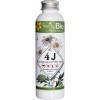
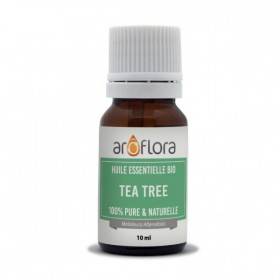
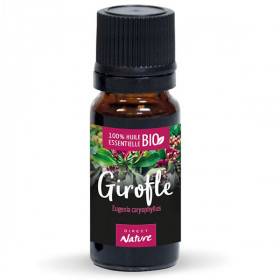
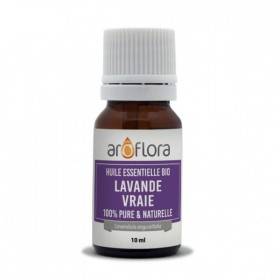
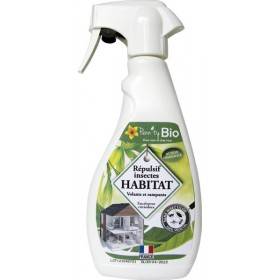
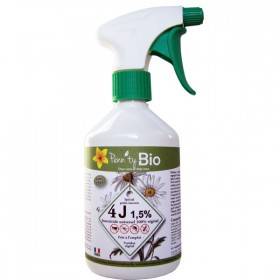

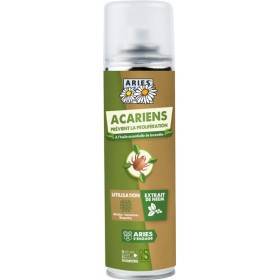
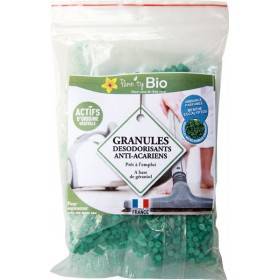
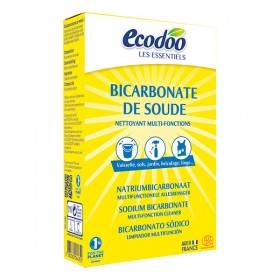
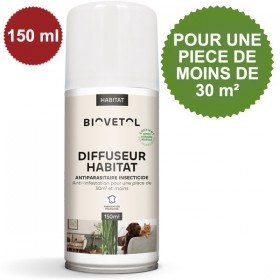
Customer reviews
Beaucoup de soins dans la commande reçue. Je recommande!
XX
Louise
Site de grande qualité !
Rose Anne Marie
I had a marvelous experience with ordering and everything ! Thank you for a great service.
XX
Bravo ! je vous félicite pour votre efficacité et ne manquerai pas de vous conseiller.
Nicolas
Claudine
colis dans les temps,emballage parfait,super accueil téléphonique pour renseignement, je recommande ce site.
ROSCO
Livraison très rapide et produits intacts à l'arrivée grâce à un emballage impeccable.
Etta
Totalement satisfait. Les produits sont super efficaces et tout est très bien suivis. Je recommande vivement ce site.
Stéphane N.
Toujours satisfait et pour les prix et pour les produits.
andré a.
Livré hyper vite. Bravo !
Mick
J'ai passé ma première commande, chez vous il y a trois jours à peine et ce matin, je reçois mon colis.
Sophie
Quel dommage pour le produit manquant, je vous remercie pour le remboursement.
Didier
Efficace, livraison rapide.<br /> <br />
H
Très satisfaite des délais, les produits sont bien emballés et le petit mot sympathique est fort agréable!<br />
Sylvana
Bon produits et service !
Rose-Marie
Très bonne adresse où l'on trouve des alternative aux produits chimiques notamment contre les insectes. Le service client est également de très bons conseils.
ck
Parfaitement parfait, je ne me fournis que chez Penn'ty bio depuis qu'ils m'ont débarrassée de punaises de lit.<br />
MARIE CLAUDE G.
livraison rapide, produits bien enveloppés avec juste un petit bémol : pour l'imperméabilisant dont le couvercle n'était pas bien fermé.
Alain
Bon produit, efficace et laisse une odeur plutôt agréable. Expédition rapide, emballé avec soins. Je recommande
Mary
Produits performants. Très satisfaite de vos services.
XX
Merci. Je tenais à vous faire part de ma grande satisfaction. Je suis enchantée par les produits et par le service. Salutations et bonne continuation,
Odile
Comme toujours service "au top" réactivité, qualité produits... BRAVO et merci pour la qualité de votre travail
Annick
Livraison rapide et fiable, dès que le chèque a été reçu. Produits de bonne qualité.
Chantal H.
Je vous remercie beaucoup de m’avoir fait profiter d’un acheminement par Colissimo alors que rien ne vous y obligeait, sauf votre conscience professionnelle, chose rare de nos jours et qu’il ne faut jamais manquer de souligner.
Cécile
Bravo pour votre sérieux. Colis reçu très vite et produits impeccables. Belles fêtes de fin d'année
Mat
Très satisfait du site livraison rapide.<br />
Michel
Satisfaction totale. Entreprise au top. J'ai téléphoné le lundi matin, malgré que les contacts téléphonique ne sont que l'après midi, une personne très charmante m'a rappelé presque aussitôt pour mes donner les infos que je souhaitais connaître sur ma commande. Bravo. nous sommes mercredi et ma commande est arrivée. Encore bravo continuez comme ça.
Jacques M.
Très bon produit facile en entretenir, pas cher.
XX
BIEN,CONTINUEZ COMME çà.
XX
Service rapide et efficace. Bons produits
XX
Excellent service après vente après un problème d acheminement de colis par la Poste. Une relation client de très grande qualité. <br /> Cordialement,<br /> <br />
PV
Très réactifs entre la commande et la livraison. Je suis toujours satisfaite de mes commandes soigneusement emballées !
France L B
Très rapide pour la livraison en Belgique et sérieux. Merci<br />
Corinne
Everything was very nice ! Keep handling your customers likes this!
xxx
colis reçu ce jour, merci pour le flacon offert
Andrée
Commande bien reçue. Je suis tout à fait satisfaite. A bientôt.
Tania
Toujours très bien et parfaitement emballé ! Merci<br />
Valérie
Bon produit mais frais de port un peu cher.
Marie Paule
Cliente depuis plusieurs années, j'apprécie toujours ce site. Meilleures salutations.
France
Merci pour le geste commercial, et aussi pour les nombreux conseils et l'excellent service client.
Tristan L
Je voulais juste vous remercier. J ai reçu mon répulsif " lézards" aujourd'hui, un petit mot super gentil joint à ma commande ça fait plaisir. J espère que ça va fonctionner. Bonne journée à vous et merci.
Cynthia
Entièrement satisfaite.
Ch. D.
J’ai bien reçu le nouveau diffuseur fonctionnel après essai et je vous remercie pour votre confiance et votre rapidité sur le traitement de mon problème. Ce n’est pas tous les jours que l’on voit un SAV aussi efficace !
Florent
merci de votre disponibilité et amabilité!
Eric
Un grand merci pour votre professionnalisme et la qualité de vos produits. Longue vie à votre site.
XX
Super efficace !!!
xx
Juste un petit mot pour vous remercier de votre disponibilité et pour vous dire également que je suis très satisfaite des produits que j'ai acheté, ils sont vraiment efficaces.
Barb.
Impeccable.
Christine
j'ai bien reçu la commande et je vous remercie pour votre efficacité.
Margot
Je trouve l'essentiel sur le site à des prix défiants toute concurrence. Continuez comme cela.
XX
Produit performant et raisonnable au niveau prix. Je recommande
XX
Commande bien reçue . Je suis très satisfaite Merci pour votre sérieux
LILIANE
Produit conforme aux attentes.<br /> <br /> <br /> <br />
Alain
Efficacité redoutable. enchanté.
Robert
Envoi rapide et soigné, produits efficaces et réponse rapide à mes questions. Je recommande.
xx
Rapide, sérieux, très bien emballé, un sans faute.Merci.
L.H.
Produits conformes aux descriptifs. Délai de livraison respecté. Satisfaite du nébuliseur qui est superbe.
VR
Efficacité de la livraison , très rapide . Produits livres en parfait état . Très bien emballés . Merci.
Geneviève
Des produits très efficaces quand on suis dans l'ordre le traitement. Un léger petit bémol sur le spray insecticide, si possible essayer de trouver un spray plus puissant et plus large pour une diffusion optimale dans les coin et recoin inaccessible. Sinon tout est nickel est une excellente qualité de résultat.<br /> PS: Il faut prendre tout les produit pour un traitement efficace en foyer privé (maison).
Florian G.
Merci beaucoup pour l'info, c'est rapide chez vous, très appréciable!
Denis
J'apprécie les services de Penn'ty bio. Un maximum d'étoiles pour eux.
Ch. D.
Emballage au top. Livraison rapide et sans dégâts.
xxx
Excellent site d'achat. Très rapide et que de bons produits.
James
Produits utilisés depuis très longtemps, toujours la même qualité ! Je recommande, les délais de livraison sont très courts, produits très efficaces.
Laurence
Livraison express. Colis toujours aussi bien préparé (cales, flocons, adhésif sur les bouchons qui risquent de couler). Bravo pour votre professionnalisme.
Isabelle
Très bons produits efficaces.
XX
Excellent!! Commande passée le lundi, reçue le mercredi!!! Les produits sont en plus de super qualité !
MADELINE
Commande reçue rapidement, frais de port raisonnables pour expédition à l'étranger et les produits sélectionnés au top! Merci!
Cédric Adolphe B.
comme toujours excellente réactivité, livraison très rapide et qualité produits TOP. Merci pour votre compétence.
Annick P.
Sav très réactif et efficace suite à avarie durant transport. La livraison du produit en remplacement du colis défectueux à été particulièrement rapide. Merci.
Valérie
Toujours impeccable, les produits, les services. Depuis que j'ai changé de facteur, plus de soucis. (Ça n'est arrivé qu'une fois!!!)
XX
Très bien ! envoi rapide et conforme à ce qui est annoncé.
Jacqueline S.
Commande facile, livraison impeccable et produits fiables. Merci.
Isabelle
Livraison toujours rapide. J'ai expérimentée le service après vente qui à été excellent avec une réparation rapide et sans frais. Je recommande vivement Penn'Ty bio
Nadine
Je tenais à vous remercier pour la commande que je viens de recevoir ce matin. Merci beaucoup et je n'hésiterai pas à recommander sur votre site.
Sandrine
J'ai bien reçu ce jour, en bon état, les 2 diffuseurs galets. Merci aussi pour votre petit mot manuscrit me souhaitant un bel été. Fidèlement,
Annie
Contente de voir que d’autres alternatives naturelles aux produits plus nocifs soient proposés. Entreprise sérieuse dont commandes sont très bien honorées. Merci.
Capzoe
Bon site, fiable, rapide et efficace.
Leo L.
Je suis vraiment très satisfaite de la prestation de ce fournisseur : délai de livraison très rapide et emballage des produits réalisé avec un maximum de soin. Bravo !!
Eliane
Très bien...merci.
Olivier
Pennty bio prends le temps de renseigner et donne de très bons conseils.<br /> Les produits sont emballés soigneusement et la préparation des commandes hyper réactive. Je recommande les yeux fermés !
Mattloumag
Hyper cher :: très déçue du prix par rapport à la quantité de produit acheté. Sur le site internet, les flacons semblent grands, or pour 80 euros je me retrouve avec 4 flacons de petits produits insecticides... trop cher
xxx
Françoise
Juste un petit mot pour vous remercier du message accompagnant mon colis ! Je croise les doigts pour que les produits marches mais entre-temps, je voulais vous remercier et en profiter pour vous souhaiter à mon tout un joli printemps.
Rose B.G
Bonjour, je voulais vous féliciter pour la clarté de votre site, la rapidité de la livraison et la qualité de l'emballage.
catherine R.
Après 2 traitements à 3 jours d'intervalle, j'ai réussi à éradiquer toutes les punaises de mon canapé. Produit hyper efficace que je recommande vivement.
Emmanuelle
Fiable, et très bons produits , Service après vente efficace et sympathique.
Vilma V.
Produit anti puce extrêmement efficace !<br /> Le vendeur a pris une demi-heure de son temps pour m'expliquer absolument tout ce qu'il y avait à savoir sur le produit, de la composition a la mise en œuvre.. Bref au top ! Je recommande donc vivement Penn'ty !
Louis
Les produits commandés sont conformes à mes attentes. Quant à l'accueil au téléphone, il est parfait et nous avons toujours trouvé un terrain d'entente. Je fais confiance à Penntybio.<br /> Merci.
XX
Très contente de vos produits.
nathalie G.
Tout était parfait. Produit, prix, délai.
Marco
Je viens de recevoir la pastille noire aujourd'hui et je vous remercie de votre envoi gratuit (ce qui est rare de nos jours).
Laurence
Une boutique en ligne, sympa et très réactive. On apprécie surtout la livraison express. Pas besoin d'être américain pour livrer dans des délais de champion !<br /> <br />
Daniel de Paris
Bien reçu. Bravo pour votre extrême rapidité. Merci
Magali
Cliente fidèle depuis plusieurs années, je ne peut que recommander ce site. Tout est parfait. Tous les produits au top, rapidité d’envoi, gentillesse, allez y les yeux fermés vous ne serez jamais déçus.
Marité 06
Super, livraison rapide, suivi très rigoureux, site de confiance, très sérieux à recommander... Merci pour tout.
Bernard
Un grand merci pour votre offre et votre professionnalisme. Pour un service en ligne, vous savez vous rendre proche de nous. Bravo et "suerte" !
Pierre M.
Bons produits, emballage impeccable, livraison super rapide ! Parfait !
XX
J'ai reçu le colis, merci beaucoup de votre promptitude et bonne continuation.
Louise
Très bien, je recommande cette boutique
Salomé
Jean-Yves
Jean Claude
Très bon produit juste ce qu'il faut à prix attractifs Envoi rapide.
xx
Un accueil téléphonique très agréable et de très bons conseils. <br /> Merci à vous.
XX
très bien livraison dans les délais, colis intact, bon produit.
Martine
Au fil de mes commandes (j'en suis à la 5 ou 6ème) décidément, du sérieux et de l'écoute ! chaque fois que j'ai eu un petit problème: contact immédiat, réponse immédiate, et tir rectifié illico ! Dans le top 5 de mes sites internet !
Vincent
Rapidité de traitement et petit mot avec le colis très appréciable.
XX
Infestés de puces de parquet, le produit a agi en moins de 24 heures. Livrés en tout autant de temps. Le seul produit qui ait fonctionné et en plus archi cool pour la nature.
Nicolas
Bons produits. Fonctionnent très bien.
xx
J'ai bien reçu le colis sans aucun problème. Merci pour la rapidité et le sens du service.
Nicolas
Une utilisation de vos produits a suffit pour nous débarrasser des poissons d'argent. Merci.
Matthieu
Après la découverte des punaises de lit dans 2 chambres de notre vieille maison, j'ai trouvé votre site. le dossier m'a été très utile et je suis très contente d'avoir trouvé des produits moins toxiques que ce que proposent les autres sites de vente.<br /> Je vous remercie d'avoir répondu à mon mail car c'est un peu l'affolement quand on découvre chez soi des punaises de lit.
Françoise S.
SATISFAITE
ANNE
Grande gentillesse et efficacité : que demander de plus ? Merci !
Chantal M.
bravo pour votre réactivité et la qualité des produits
Annick P.
Très contente des produits de qualités et une commande reçu très rapidement. Merci
PATRICIA A.
Commande reçu très correcte, très bon matos, encore merci et bonne continuation.
Dominique et Monique A.
Bon choix, bons conseils et service livraison très rapide. J'aime faire mes courses sur ce site.
FDA
Efficace rapide et à l'écoute. Diversité des produits. Efficacité des produits. Respect des délais de livraison et prise en compte des spécificités client PMR ( ce n'est pas toujours le cas). Site bien fait pour navigation et produits bien mis en valeur. Des promos et des bons de réduction cumulés en fonction des achats. Merci pour votre efficacité rapidité et professionnalisme.
xxx
Les produits achetés sont excellents. Ils répondent parfaitement à ce que je cherchais. Bravo pour votre site
Michel
Site très pratique. Commande aisée. Suivi régulier. Délai de livraison respecté. Colis très soigné. Tout est parfait.
Nicole
yvette
Bravo ! je vous félicite pour votre efficacité ne manquerai pas de vous conseiller. Merci à la prochaine commande
Anthony
Modèle conforme bien emballé délai respecter continuer comme ça parfait.
Carlos
livraison rapide, produit conforme.Prix séduisant.
XX
Vos explications par email ont été très claires et votre diligence dans le traitement de ma commande et de mes demandes est très appréciée.
Henri
Service de qualité, suivi rigoureux, et rapidité au rendez-vous. Les produits sont très fidèles à leur description et pour un coût serré. A recommander fortement.
JACKY
Ma commande s'est déroulée sans aucun problème avec une livraison rapide et soignée. La satisfaction est au rendez-vs ! Continuez ainsi ! Merci et cordialement !
Etoile 07
Boutique sérieuse. Commande arrivée très rapidement. Merci pour votre gentil mot avec la facture.<br /> <br /> <br />
I Defoy
en comparaison d'autres produits employés précédemment, je trouve les vôtres beaucoup plus efficaces et cela sur le court terme ,disparitions des odeurs en combinant les produits suivant vos conseils .
XX
Après un souci sur l’article livré, le site a fait preuve d’une excellente communication (simple et efficace par sms) qui m’a permis de me faire livrer un 2nd article par la marque très rapidement. Parfait !
Pierre
J'ai été très déçue de ne plus trouver mon déboucheur dans mon biocoop habituel, et perplexe en apprenant qu'il était remplacé par un produit à base de soude...c'est comme ça que je vous ai trouvé sur internet.<br /> Alors merci pour le dépannage, pour le mot gentil qui accompagnait mon colis , et bravo pour le calage en amidon de maïs compostable!<br /> Bravo pour votre démarche et à très bientôt.
Cécile D.
Diffuseurs qui sortent vraiment de l'ordinaire, un envoi parfait - merci BCP
Anthony
Content des produits achetés, reçu rapidement et bien emballé. Merci.
XX
Site clair, envoi rapide, marchandises bien emballées, et un petit mot charmant!
SM
merci pour votre professionnalisme. Merci pour les produits envoyés dans de bons délais. Merci pour la qualité de vos produits
Marcelle
JM
excellent.
XX
Je suis très satisfaite de mon échange avec le service client (personne à l'écoute, de bon conseil). Envoi rapide et soigné, avec un petit mot sympathique de l'équipe, le top!
XX
Très bon site, du personnel sérieux et la livraison en temps et en heure. Merci
Marine T
trés satisfaite de ma commande,( produit, et livraison,rapide ) MERCI
Danièle M.
Rapide, sérieux et qualité, produit correspondant à la description, très contente, je recommande votre site et vos produits.
Corinne
fidèle cliente de Penn'Ty Bio, je ne me fournis que chez eux.
XX
On ne peut pas toujours faire confiance à des sites de ventes sur le web, mais sur Penn'Tio, j' y viens les yeux fermés. Excellente communication avec le service clientèle, un suivi sérieux. Je remercie chaleureusement toute l' équipe.
Sergine T.
J'ai bien reçu mes articles et je vous remercie pour la livraison rapide et impeccable !
Françoise
Très bons produits je les recommande.<br /> Merci à Pennt'ty Bio pour tout, aussi bien pour les commandes et les emballages.<br /> Bravo Pennt'ty Bio.
Bernadette G.
clair net précis. merci
jannick
Excellent site rapide et efficace. Descriptif intéressant.
XX
Merci à Penn'Ty Bio pour la qualité des produits, la réactivité de l’Équipe et le petit mot attentif qui accompagne les colis. Votre site est précieux !!
Veronique B.
Livraison rapide. Produits bien emballés.
Bruno
Je voulais non pas faire une réclamation; mais vous féliciter pour vos produits que j' ai bien reçue, et également pour la rapidité de votre envoi ce qui est plutôt rare dans d'autre site.
Jérôme
Vos produits sont de bonnes qualités et les produits très bien emballés
Dominique
En cette période d'avant Noël, je craignais que me colis arriverais en retard. 48h après mon achat, c'était dans la boîte aux lettres. Du coup, je suis large pour mettre mon achat sous le sapin. Merci à vous
Art4
Colis très bien protégé service rapide. Merci. Site très sérieux .
Elios R.
De très bons conseils, une livraison rapide et des produits de qualité !
Fabienne P.
Noëlle G.
Livraison très rapide. Notice livrée avec les produits ainsi qu un petit mot très agréable. Produits très efficaces, avec de l huile de coude, on en vient à bout. Le produit concentré nous a permis de tout éliminer. Par précaution, nous avons tout de même utiliser le spray. Dans une pièce, nous avons utilisé le fumigène. Pour les animaux, la mousse semble efficace. Dans quelques jours nous ferons le shampooing et plus tard les pipettes. Mais franchement après avoir utilisé d autres marques qui ne fonctionnaient pas, nous sommes ravies et nous recommandons ces produits. Merci
Virginie C.
Excellent article sur les diffuseurs d'huile essentielles ! grâce à lui j'ai pu faire mon choix basé sur une excellente analyse de votre part !
Laurence
Tout à fait satisfait de la qualité de la livraison ainsi que du produit commandé.
Régis
Très bon site. Navigation facile. Les commandes sont expédiées rapidement comme annoncé. Aucun problème depuis que je suis cliente. Je recommande Penn'ty bio.<br />
Elvyne
Commande reçu en 2 jours, impeccable. Tous les produits emballés avec le plus grand soin, petit mot personnalisé! Et encore un petit savon bio au parfum délicieux comme cadeau!! Merci Penn'Ty Bio !!
Orchidée
Alex
Merci beaucoup pour la rapidité avec laquelle vous m'avez fait parvenir le diffuseur.
Bichette
Client depuis plus de 10ans. Toujours satisfait du matériel propose. Boutique sérieuse prix compétitifs livraisons et suivis rapide.
XX
J'ai toujours été satisfaite de mes commandes chez Penn'ty bio. Rapide efficace. Surtout les caractéristiques des produits est claire et complète. et le site contient beaucoup d'informations sur les différentes gammes. Merci pour votre travail et votre activité.
XX
Bonjour Sophie et Quentin,<br /> Je viens de recevoir ma commande et je tenais à vous remercier pour la rapidité de l'envoi, votre gentil petit mot et le petit présent qui sent bon et donne envie. Bel été à vous deux également
Geneviève
Livraison efficace et bon contact oral avec mon interlocutrice.
Maussane
Site intéressant. Je l'ai découvert, en fait. Produits ménager éco-responsable. Bon pour la maison et non agressifs. Merci.
Mydiadao
Marie Aline Roux
Explication, commentaire et livraison en un temps record, tout était parfait, même le petit mot de remerciement écrit à la main ! Merci beaucoup
Monique S.
Parfait.
Philippe
Excellents services, très serviable
XX
L’esprit commerçant de proximité chez un vendeur en ligne !
Philippe
Rapidité de livraison. Très bon produits. Merci
Mélina
C'est la deuxième fois que je commande sur ce site. J'ai découvert qu'il existait des verreries aux dimensions différentes. Mon diffuseur étant ancien, j'ai chercher le modèle le plus adapté et j'ai trouvé! Mon diffuseur fonctionne à nouveau
Christiane D.
J’ai découvert cette société en faisant une recherche sur Internet pour trouver un insecticide contre les sclérodermes. Je ne peux pas encore juger l’efficacité de chacun des produits par contre je suis très satisfait de la rapidité et de la qualité d’expédition, ainsi que du sérieux de la société. J’ai même reçu un petit échantillon est un mot personnalisé j’ai trouvé ça très sympa! Merci beaucoup et bonne continuation pour votre société que je recommande déjà.
BJ79
Correspond à mes attentes
Henry
Très satisfaite. Merci.
CM
Super produits, envoi rapide et soigné, conseils et échanges courtois ! Une jolie boutique en ligne pour acheter en toute confiance ! <br />
Patricia
Un grand merci pour la qualité et la rapidité de votre réponse.
Tony
Bons produits conformes à mes attentes et livraison au top. Je recommande vivement.
Chantal P.
Site très réactif livraison rapide le produit Stop tique et puce est parfait sauf le pulvérisateur.
Danielle B.
Avec les trois lettres BIO dans votre nom, je ne m'attendais pas à découvrir des billes de polystyrène comme matériaux de rembourrage. Il y a certainement plus écolo !
Michel D.
J'adore ce site qui fait un vrai travail de sélection de produits que je ne trouve pas ailleurs et sur une large gamme. Je recommande.
Veronique G.
Envoi rapide, emballage au top, continuez comme ça... :-)
bruno b.
Livraison rapide et avec colis préparé avec soin :)
Florian
Merci pour votre sérieux et la réexpédition ultra rapide d'un achat non conforme (dont vous n'étiez pas responsable).
Marc
C'est vraiment magnifique et ce cadeau a plu, je commanderais pour Noël.
Martine
Merci pour cette première commande, envoyée très rapidement, et dans un petit colis, avec frais de port très raisonnables.
Valérie O.
Excellente réactivité !!! Produit en stock, commandé le 23 dec à 8h30, recu le 24 dec à 9h30. On peut guère mieux faire ! Super communication avec le vendeur.
Xavier
Comme d'habitude, envoi soigné, produits performants, Merci.
XX
Super !
Yann
Les produits ont été très appréciés par la destinataire. <br /> De plus quand on pose une question, on a toujours une réponse, un conseil très rapidement. Merci pour votre réactivité
xxx
Mon avis sur penntybio, très bon produit sur ce site pas une gamme monstrueuse mais que du très bon, et pareil pour les livraisons ultra rapides et le excellent sav si besoin. Je recommande vivement. Client depuis 2018 aucun soucis.<br /> <br />
thierry g.
Très satisfaite de ma commande. Emballage soigné et envoi rapide. Merci beaucoup pour votre professionnalisme !
Sophie
Livraison très rapide et produits bien emballés.
Catherine
Commande reçue assez rapidement. Merci pour votre sérieux.
Émilie
Un super magasin en ligne, avec plein de produits disponibles.<br /> L'envoi a été très rapide et soigné, avec une très bonne communication à chaque étape. Bref, une adresse à connaitre et à garder ! Merci !
Pab57
livraison impeccable, produit bien emballé et correspondant au descriptif, excepté pour la surface de diffusion, ma salle principale doit faire 25m2 maximum et ça ne se diffuse pas au-delà.
Pascale
Livraison conforme et rapide. Les produits sont emballés dans des emballages recyclables, voire compostables : j'ai beaucoup apprécié. Je recommande ce site.
Patrick
Bon service et bon produits
Odile R
Merci beaucoup le colis est arrivé à la poste hier et je te retire aujourd'hui Merci pour votre efficacité et votre rapidité
Ingrid
Je voulais vous remercier +++ pour votre gentillesse et surtout... votre compétence. C'est vraiment de l'excellent travail... j'ai été bluffée :-)<br /> Renseignement téléphonique 10/5 - produit 10/5... encore merci
Maryse
Après essais de divers produits, votre insecticide 4J est le seul à être venu à bout des puces ramenées par le chat de la maison. Livraison rapide par chronopost
JEAN MARIE
Parfait !
Mireille
Fidèle à votre marque, je tenais par ce mail à vous féliciter vous et votre équipe pour votre longévité. Votre marque est toujours gage de qualité et sérieux.
Céline
Livraison rapide , produits de qualité, je recommande Penn'Ty Bio.
XX
Tout est parfait : la qualité des produits, la rapidité d'expédition, la qualité du colis. Je suis enchantée et resterai fidèle à ce site.
Dominique
Un plaisir de recevoir les colis soignés et respectueux de la planète de Penn’Ty Bio. Merci
k.
Très satisfaite. Je recommande cette société sérieuse. bon suivi de la commande.
Sandrine
Tout est parfait à chaque fois. L'attention portée va même jusqu'au petit message, c'est agréable. Fidèle aux produits et au site plus que jamais.
xx
interressante. Beaucoup d'articles référencés. Après pour la lutte contre les punaises de lit, je ne suis pas sure de l'efficacité de certains produits. C'est un vrai fléau ces bestioles.
Francelyne D.
Merci beaucoup pour votre rapidité et votre professionnalisme.
Julie
Merci pour votre démarche si respectueux de l’humain, des animaux et de l’environnement !
A.F
livraison tip top tant en temps et en qualité.
XX
C'est extrêmement délicat de votre part d'avoir fait diligence. Je ne manquerai pas de recommander votre site et de souligner votre gentillesse. Encore merci
Michel
Merci à Penn'ty bio d'avoir garder beaucoup de produits de la marque Lerutan et pour le sérieux dans la préparation et l'expédition des colis. Je recommande.
SR
Prix intéressants. Expédition super rapide à bon prix. Et tout ça de façon agréable !
Alexis M.
Cliente depuis plusieurs années. Super service, réactif, cordial. Les produits sont excellents.
Christine
Bon produit. Merci Penn'Ty Bio. Un seul passage dilué à 5% et les puces ont disparus. Il en restait deux ou trois qui ont dû se perchés pendant le traitement mais sinon c'est performant.
Axel
Première commande chez Penn'Ty Bio : <br /> - navigation sur le site = 5/5<br /> - préparation du colis = 5/5<br /> - Prix compétitifs = 4/5<br /> - Qualité des produits sélectionnés = 5/5<br /> <br /> Vendeur à recommander.
Gaëlle
Un grand merci pour cette commande envoyée très rapidement. Je recommanderais votre site
Elise
Penn' Ty Bio, c'est ma référence depuis 10 ans au moins. Je ne commande mes produits de toilette et d'entretien que chez eux. Les marques et le service est irréprochable.
GAELLE
Commande tout à fait conforme et emballée avec grand soin.
Sarah
Très satisfaite par Penn ty bio. En effet, suite à un produit défectueux ( housse matelas) , j'ai aussitôt reçu un bon de retour pour renvoi gratuit en colissimo et ai reçu la nouvelle housse dans les 48 h, avant même le renvoi de la première housse. Merci pour la réactivité et la confiance de cette entreprise.
dominique B.
Envoi très rapide et bravo pour votre site de reconnaissance des insectes nuisibles.
Brice
Commande passée le jeudi soir, colis livré chez mon "commerçant-relais" le samedi matin. Quelle rapidité ! Du vrai professionnalisme !
Emeline
Ravie de découvrir un site qui présente des produits de qualité avec une vraie démarche éco responsable à des tarifs intéressants.
XX
Bien, la majeure partie des produits sont efficaces. Je connais cette boutique depuis plusieurs années, je recommande ce site.
XX
Marie-Noëlle
service très efficace à chaque fois que j'ai commandé. aucune mauvaise surprise sur la livraison. je recommande
Agnès
Merci pour tout le soin que vous mettez pour une livraison individualisée, chaleureuse et aussi peu impactante que possible sur l'environnement !
Sandra
Service clientèle très réactif en cas de difficultés. Livraison rapide. Emballage des produits fragiles excellent. Maison sérieuse, je recommande.
Marie
Personne disponible, de très bon conseil suite à des punaises de lits dans mon habitation, les produits sont efficaces car depuis aucune punaises et la vie à repris son cours ... merci pour tout
Nathalie
Rapidité, emballage nickel et écologique, mot de remerciements personnalisé, produits au top....j adore....je suis une nouvelle cliente conquise. Un grand merci...
Hélène P.
Excellent site. Très à l'écoute. Livraison rapide. Problème avec un piège à guêpes un autre m'a été livré très rapidement. Chapeau et très agréable de tomber sur des gens compétents.<br /> Encore merci.
XX
Je parlerais de vous a mes amies car vos produits sont vraiment excellents. Bien a vous et tous mes remerciements.
Patricia
J'ai été TRES bien conseillée lors du contact. Produit naturel donc c'est parfait.
Lilla
Jamais déçue : les produits correspondent à la description et sont livrés rapidement.
Mireille
Colis parfaitement emballé et produits conformes. 1 des produits était très fragile et est arrivé en excellent état, merci :o) Pourquoi achetez à l'étranger alors qu'on a de si belle s entreprises en France? Tarifs identiques ou moins chers que chez Amazon ;o)
Stéphane C.
Je me permets de vous écrire un petit mot afin de vous dire que votre site est très bien fait.
Tom
accueil téléphonique personnalisé réactif compétent et bienveillant, livraison rapide et conforme. BRAVO merci pour la qualité de votre travail
Annick
Commande bien reçue;je suis tout à fait satisfaite;à bientôt
Sonia
Très satisfait de Penn'Ty Bio : choix étendu,prix raisonnables délais de livraison rapides.
xx
Juste ce petit mail pour vous dire que j'ai bien reçu votre colis et que mon patron est enchanté ! Ca embaume les huiles essentielles dans le bureau et... ça ne fait pas de bruit ! Encore un grand merci pour votre gentillesse et votre souplesse commerciale.
Sonia
Très bien , bon produits, La prochaine commande avec plaisir, livraison très rapide.<br />
Rainer
Livraison en temps record à l'adresse indiquée en France puis départ dans l'océan indien. Reception des produits en quinze jours à l'autre bout du monde : ravie. Je vous laisserai les avis produits une fois utilisés. Le site est très bien fait et très agréable à utiliser. Le petit mot à la main dans le colis humanise la transaction, je l'ai apprécié. Je pense que vos produits sont très utiles et je vous souhaite une belle réussite et sur la durée.
Sylvie D.
rien a redire, sauf, le montant des frais de livraison, un peu élevé.
XX
MOI JE DIS INCROYABLE !!!<br /> Plus que mieux d'une rapidité de dingue ! bravo et le colis impeccable surprotégé.<br /> Que toutes les entreprises prennent exemple sur vous. merci
AURELIE A.
Je vous remercie pour vos services. C'est très agréable d'être informé de la sorte.
Anthony
Parfait comme d'habitude
Sylvain
Dommage, les vendeurs ne savent pas lire les indications inscrites sur les produits qu'ils vendent
XX
Service rapide et efficace. Et Sympathique ! toujours un petit mot, ça fait la différence. Et c'est français en plus :). Je recommande.
XX
Livraison très rapide; Tout était parfaitement emballé. Je referai appel à vous.
JV39
Un diffuseur plus de 80 M², avec huile essentielles eucalyptus, vraiment formidable, on respire mieux et çà sent super bon. Le matin 1 heure, et le soir 2 heures. De jolies couleur, et pour les fêtes une jolie ambiance. Bravo.
PATRICK
Merci pour votre geste que j’apprécie.<br /> Cela fait plaisir de retrouver l’esprit commerçant de proximité chez un vendeur en ligne. Je surveillerai attentivement cette nouvelle livraison.
Philippe
Commande bien reçue ! Bien emballée ! ! ! Jolis produits ! Merci !
AYH
Très bon site. Envoi rapide. Prix moins cher que sur d autres sites. Bravo et bonne continuation.
Camille
Bonjour Monsieur,<br /> Nous nous étions parlés au téléphone il y a quelques années. Bravo pour l'évolution de votre site et vos dossiers instructifs. Vos produits aussi sont très bons. Bonne continuation, bien cordialement.
Marina
j'ai reçu mon colis aujourd'hui, merci c'est très rapide et sérieux.
Clara
merci pour le suivi de ma commande et les mails par lesquels vous m'avez tenu informée.
Zoé
Service très professionnel et très rapide. A conseiller fortement.
Didier M.
Une entreprise fiable, efficace, de confiance, chez qui je recommande de faire ses achats.
S.
Site très sérieux et personnel vraiment agréable. Envoi rapide. C est parfait !
Ingrid
Bravo et merci : produits de qualité et service TOP... continuez !...
XX
très bons produits et service commercial très performant, continuez sur cette voie, merci.
Annick
Très bon produit, conforme à la description.
MICHELE P.
Bonjour. Je souhaite vous remercier pour votre rapidité. Le colis est arrivé en bon état . Les huiles que nous avons commandées embaument la maison. Ce diffuseur est génial.
Christian
Merci d'être à l'écoute pour notre terre et vos clients. Encore une fois je suis très satisfaite de ma commande. Et mes compagnons à 4 pattes sont ravis de se protéger en bio. Merci pour votre attention manuscrite en fin du bon de commande..
Raymonde julie L.
Pas encore essayé le produit, mais le site est très sérieux. Livraison dans un temps éclair, même si je suis en Belgique. Emballage soigné. On peut faire confiance.
Roberta
Site de produits naturels et bio très bien fait, agréable et fiable. beaucoup de produits de qualité.
Anne Marie R.
Livraison rapide et bien emballé. Petit message manuscrit qui fait plaisir :)
xx
J'ai enfin reçu le petit colis, hier. Il a mis un mois pour me parvenir, mais vous n'y êtes absolument pour rien, comme je le pensais, il a été mis de côté lors de la grève nationale. Je vous remercie d'avoir fait faire des recherches, j'ai reçu un mot de la poste.
Hervé
Je suis cliente depuis de nombreuses années. Toujours satisfaite du site, des produits et de la livraison.
martine O.
2 commandes à mon actif et jamais déçue. Vous avez gagné une cliente régulière :) Merci pour votre sérieux et le contenu bien rempli de votre site ! c'est super d'avoir une description hyper détaillée de chaque produit.
clara
Une grande compétence, Monsieur Dufil est très professionnel et sait soigner ses clients. Quand à la gamme de produits proposés, elle est parfaite et complète.
Alain A.
Livraison très rapide et colis emballé soigneusement.Site à recommander.
isabelle d.
J'ai découvert ce site en cherchant de la terre de Diatomée. Livraison rapide. Très sérieux. J'ai mis la page dans mes favoris car j'ai repéré d'autres produits.
Isa
Site très sérieux, de très bons produits et la livraison est rapide.<br />
Isabelle
Bon rapport qualité-prix. Envoi rapide et sécurisé !
Chrile
Commande reçue rapidement, très bien
XX
Tout est parfait de la commande à la réception. Commander jeudi et reçu samedi. Et très contente de mon achat . Je recommande
Nadege M.
super emballage écolo...bravo !
Isa
Je confirme efficacité sur la préparation et expédition du matériel. un grand merci
Jeremy
Je suis une amie de vos parents et suis toujours très satisfaite de tous vos produits. Ne changez rien et bonne continuation.
Marité D.
Livraison rapide et produit conforme à la description. J'approuve à 100% le principe du recyclage des éléments d'expédition. Un produit fabriqué une fois soit avoir plusieurs vie. Bravo pour cette initiative.
Christophe
J'ai bien reçu ma commande. Com' dab' , rapidité efficacité ...Merci
Sally
Excellentes prestations. Les produits sont formidables, l'emballage aussi. Les délais d'expédition compétitifs. Je recommande vivement Penn'Ty Bio à tous ceux que l'état de la Planète pour les générations futures inquiètent.
XX
Site pratique, compétent, prix corrects. Un envoi très rapide, et je dirai "parfait".
Greg
Très bon site, très sérieux je recommande, produits de qualité et service après vente au top, de plus livraison des plus rapide et produits très bien emballés, tout est parfait
virginie
Penn'Ty Bio wonderfully served our family in Switzerland so that we could try the range of Totemsavon products, which are such caring, loving, and consciously manifested creations :)<br /> <br /> By allowing a shipment to Switzerland and elsewhere, I am sure so many more people would be able to benefit from the beautifully selected product portfolio in Penn'Ty Bio and all, together, make a conscious leap by using and demanding a way more purer approach to anything we interact with.<br /> <br /> Thank you so so much Penn'Ty Bio!<br /> <br /> In 8 Love We Heart Trust<br /> <br /> Miguel Ángel
Miguel Ángel
Très bons produits, service rapide et de qualité, rapport qualité/prix intéressant. Je recommande vivement.
Alain
Sophie. A
Client depuis des années Produits de qualités et surtout qualité de service.
XX
Toujours aussi "réactif" et efficace<br /> Bravo et merci pour votre professionnalisme.
Annick P.
anne-marie B.
Envoi rapide. Rien a redire.
Marie France
Hélène
Livraison très rapide. Bravo pour la réactivité
François
Produits de bonne qualité, naturels et efficaces, expédition rapide et bien emballée, sav très rapide suite à une erreur de ma part,
XX
Merci pour vos conseils avisés. Et merci pour vos produits de qualité.
Loïc
THIERRY
ANNE
Bonjour Sophie & QUENTIN, Merci pour votre petit mot. . . . Ça fait chaud au Cœur de voir qu'il y a encore des Gens Comme VOUS sur cette planète ! Le monde devient de plus en FOU ! ! ! Cordialement.
Dominique T.
Rien à redire, de la commande à la livraison.
XX
Dimanche soir, invasion de vrillettes du pain. Lundi matin, commande en urgence des produits verts adéquats. Mardi, livraison, traitement et fin de l'invasion.
Jean-Pierre
j'ai reçu mon colis aujourd'hui, merci c'est très rapide et sérieux.
Nathalie
Livraison rapide, emballage plus que parfait, le diffuseur NEOLIA est merveilleux pas bruyant, fonctionnement idéal. Merci PENNTYBIO pour votre sérieux, site web à recommander.
CLAUDE
Excellents produits. Excellent service.
James T
Colis bien arrivé. Emballage remarquable. Diffuseur très joli, très efficace et peu bruyant avec de la couleur qui change. Très satisfaite de la commande.
Sabrina
Service de qualité, suivi rigoureux et rapidité au rendez-vous. Mon colis est arrivé vite même avec un paiement par chèque. Les produits sont très fidèles à leur description et pour un coût serré. A recommander fortement.
Vincent
Franchement, Penn'ty bio, c'est top ♥<br /> Quentin est super réactif, de très bons conseils. Encore merci de votre efficacité.
Hélios ☼♥
Livraison rapide , le tout correspond à mes attentes.
Julie
Site intéressant proposant de bons produits, attractifs et respectant la nature. Le regret c'est le prix de certains articles.<br />
Catherine
Toujours parfait, livraison, emballage, délai et gentil petit mot personnel pour me remercier de ma fidélité.
XX
super contente, j'y trouve facilement les produits dont j'ai besoin et le service est impeccable et gentil !
Hélène S.
Bon produit , envoi rapide.<br /> <br /> <br />
Christine
Je suis ravi de trouver les produits de qualité et d ‘efficacité incomparable.
Denitza K.
Site internet complet, beau et facile d'utilisation<br /> Commande complète et correcte.<br /> Commande emballée a la perfection avec du matériel recyclable, compostable<br /> Délai d'envoi respecté même a l'étranger (Pays-Bas)<br /> Mention spécial pour le petit mot personnalisé ++<br /> On sait pourquoi on commande chez Penntybio depuis 10ans :)<br /> Bonne continuation
Jennifer A.
1ère commande. Très satisfaite : Colis expédié très rapidement et bien emballé. Merci pour votre sérieux.
Ghyslaine
Client depuis de nombreuses années, je suis satisfait à la fois de la boutique et de pratiquement tous les produits achetés.
Jean-Claude
Merci à tanteOdile pour m’avoir fait découvrir votre site. Depuis je suis une cliente assidue. Très satisfaite de la rapidité des envois, de la qualité de vos produits qui sont par ailleurs très bien détaillés par leur composition et leur mode d’emploi. Une amie vous a rejointe également avec la même satisfaction <br /> Continuez.
Marité D.
La livraison est rapide, je n'ai jamais était déçue de ce site, et les produits sont pas chers et de très bonne qualité!
Patricia
Livraison rapide et très bien emballé et protégé. Très bonne efficacité. <br /> <br />
XX
J'apprécie depuis de nombreuses années la qualité de vos produits et le sérieux de votre site. Une petite mésaventure avec un diffuseur me permet de vous féliciter pour la réactivité de votre SAV. Bravo !
Thierry G.
très satisfaite de ma commande site vraiment sérieux livraison soignée et rapide ,les articles sont conformes a la description,je suis enchantée et recommande vivement
Marie Viviane C.
C'est ma première commande chez Penn'Ty Bio, et ce ne sera pas la dernière.<br /> J'étais à la recherche d'un nouveau diffuseur d'HE et, après discussion avec Quentin, mon choix s'est arrêté sur l'Elixia (Direct Nature) qui est d'une efficacité redoutable et d'un silence absolument surprenant.<br /> La livraison s'est faite en 72h en point retrait avec un conditionnement hyper sécurisé.<br /> Lors du déballage, j'ai constaté un léger défaut de finition sur la verrerie.<br /> J'en ai fait part à Quentin par texto avec photos à l'appui.<br /> Il m'a aussitôt recontacté pour me proposer un envoi d'une nouvelle verrerie dès que disponible.<br /> Un professionnalisme et un sens du service exemplaires qui font de cette enseigne une valeur sûre.<br /> Penn'Ty Bio est vraiment la boutique en ligne qu'il vous faut connaître.<br /> Je vous la recommande vivement.
Jean-Yves S.
livraison rapide ,prix raisonnable , produits super efficace j'ai vite calmé mes douleurs lombaires ...enfin soulagée . Merci pennty bio
JEANNINE
Bonjour, colis bien emballé arrivé sans encombre, démarche écolo bien ancrée et petit mot perso. Merci à l'équipe de Penn'Ty Bio.
Sofi
Je ne connais pas encore tous les produits mais contente de ce que j'ai commandé. En revanche un peu cher quandmême ce qui me limite.
xxx
Très bon site avec de très bons produits et un soin particulier apporté à la préparation de chaque commande... De plus, Sophie et Quentin prennent la peine d'écrire un petit mot de remerciement avec la commande envoyée....c'est peu commun mais très sympa....:-)
STEPHANE P.
Produits d'excellente qualité, arrivés rapidement, et conformes à leurs descriptions.
Michelle G.
Suite à un précédent message notifiant une erreur de produit à la livraison, Penn'Ty bio m'a fait parvenir à titre gracieux le bon produit. Merci
Martine
Excellente communication, service très rapide (même à l'étranger), emballage parfait ...
Jacques N., Belgique
Site sérieux, proposant de bons produits, efficaces en particulier sur les punaises de lit, fléau actuel. Merci car entre les produits et les housses de matelas nous avons réussi à les éradiquer dans deux maisons à deux ans d intervalle. <br /> Bravo aussi pour la livraison la plus écologique possible.
L.C
Pour ma part j'ai été satisfaite de la réalisation de ma commande et du délai de livraison. Je recommande votre société.
Nelly
Super produits accueil plus que parfait gentillesse. Livraison au top merci beaucoup
Christiane
Très satisfaite.
Louise
Merci pour l'expédition de la pièce de verrerie qui a été recu cette fois sans casse. Meilleures salutations et à très bientôt sur votre site pour un prochain achat .
Louane
je vous remercie pour vos services, c'est très agréable d'être informé de la sorte. colis bien reçu Merci pour la rapidité de la livraison
Bernard
J’ai bien reçu mon colis et vous remercie de votre rapidité. Bravo pour le geste écologique et durable. Emballage nickel ! Et mon chat a adoré jouer avec les billes jaunes !
Anouk
Produit de qualité conforme à mes attentes, envoi rapide et soigné, très bien.
Anne
Sav rapide et disponible. Au top
Severine
J'ai reçu mon colis hier. Merci de vos démarches,
Sam
Envoi rapide et soigné. Emballage ecoresponsable. Je suis ravi d’avoir trouvé des pièces de rechange pour les diffuseurs à huiles essentielles!
Ina L.
Très contente d'avoir découvert ce site internet ! Du conseil jusqu'à l'achat c'est super. J'étais très embêtée après l'apparition de petit insecte chez nous (des anthrenes) et c'est le seule site internet e-boutique qui a pu nous renseigner dessus et enfin indiquer les produits pour les éradiquer sans pour autant nuire à notre santé (mais en respectant les conseils d'utilisation bien sûr). J'ai reçu ma commande rapidement, et avec surprise un petit mot de remerciement personnalisé avec mon nom dessus. Des détails qui au finale font la différence. Un service de qualité rien à dire. Merci !
XX
Tout va bien. Bonne année 2021.
Bernadette M.
Commande et livraison rapides!<br /> Rien à dire, c'est parfait !
Christine
Merci et surtout, continuez, c'est rare de trouver sur internet une relation aussi personnalisée sur un mode aussi agréable.
Sabine
Produits facile à utiliser, efficaces et finalement pas plus onéreux, à l'usage que des produits issus de la pétrochimie. Service livraison impeccable. Je recommande +++<br />
XX
Pennty Bio? Einfach genial. Super rapide , bon produits, super service-livraisons. Je vais recommander bientot =)
xxx
2 commandes à mon actif et jamais déçue. Vous avez gagné une cliente régulière :) Merci pour votre sérieux et le contenu bien rempli de votre site ! c'est super d'avoir une description hyper détaillée de chaque produit.
Magali
Très satisfaite de ma commande chez Penn'ty bio. Site très détaillé, produit reçu rapidement, message manuscrit très sympathique. Je recommande !
XM
Je vous remercie de votre professionnalisme et de votre réactivité.C'est loin d'être toujours le cas lorsque l'on commande sur internet.
Gaëlle
Je tenais à vous remercier pour votre service de qualité, une livraison toujours rapide, des colis bien emballés - qui évitent fuites et casse, ainsi que pour le petit mot personnalisé joint à chaque commande, c'est toujours très agréable.
Isabelle G
Très satisfaite du produit.Rapidité et emballage très soigné.SERIEUX.
MARLENE
Excellent service et livraison rapide. A conseiller pour la santé des animaux (chiens et chats)
MICHEL
Service très réactif, emballage soigné , livraison rapide. <br /> Rien à redire . Continuez !!
Sophie
Bonjour, j’apprécie depuis longtemps votre travail : la qualité de vos informations et des produits que vous vendez.
Frederic
Cela fait plusieurs fois que je commande chez Penn'Ty Bio et je suis toujours satisfaite de la qualité des produits et de la rapidité d'expédition. Je recommande ce site !
Ghyslaine
Tout était parfait l’envoi la livraison merci beaucoup
XX
Envoie soigné et rapide.<br /> Merci pour le petit mot à la main.<br /> Très appréciable.
XX
Très satisfaite, merci.
Christine
Service au top !!!<br /> Colis reçu très rapidement avec un petit mot manuscrit me remerciant de ma commande et de la confiance que je leur ai témoigné <br /> Suffisamment rare pour être signalé <br /> Je vous encourage toutes et tous à les soutenir en passant commande chez eux!!!!<br /> Longue vie à Penn’Ty Bio !!!!<br /> Ils le méritent
Pierre-Steph
Merci et bravo pour la qualité des produits et du service toujours aussi efficace et performant.
Annick P.
sérieux
XX
Parfait ! Envoi rapide et produits de qualité. Merci pour le petit mot. Je suis très satisfaite !<br />
Julieanaïs
Je suis arrivée sur votre site en cherchant un diffuseur que je viens de commander, mais je voudrais vous dire que votre site est très intéressant, bien fait. Vos dossiers sont enrichissants merci
Joelle
Les produits achetés sur le site sont de très bonnes qualités, et j'ai été très bien conseillée. Je recommande !
Aurore
Merci pour votre efficacité et votre gentillesse, commande, livraison, petit mot agréable, tout était parfait !
Sylvie
Nous sommes très satisfaits du service client : mot personnalisé dans le colis, disponibilité du service après-vente... Nous souhaitons à votre société un succès croissant.
Sara
Site sérieux. Bons produits.
Magali
Maryse
Envoi très rapide, personnalisé et soigné. Merci
XX
fiable et de bonne qualité pour les services et les produits :)
XX
Très bien !
XX
Boutique très sérieuse avec un envoie rapide et des produits super efficaces.
XX
J'ai bien reçu le diffuseur et j'en suis très content.
Paul
J'adore. Très grande diversité de produits, les explications sont simples et complètes.Quand aux colis, ils sont extrèmement bien protéger. Un grand merci.
Nadine
MERCI au personnel à l’emballage !!! Ma dernière commande était super bien emballée. Elle a résisté aux (épouvantables) chocs subis pendant le transport. Merci
Veronique
Parfait. Rien à redire. Extrêmement efficace.
Quentin
Livraison rapide et petit mot manuscrit joint au colis, vraiment très sympa! Merci et continuez, vous le méritez.
Jean-Pierre
Les produits sont de bonne qualité. Leur prix est raisonnable. Ils sont livrés rapidement, et en bon état.
XX
Produits livrés rapidement dans un colis non surdimensionné, les produits sont conformes à la description. Je recommande vivement ce site très bien fait !
Hervé
très bien je recommande.
Sylvie
Super, envoi rapide,bien protégé et petit cadeau !
xx
produit parfait.
René
Un grand merci pour la qualité et la rapidité de votre réponse.
Simon
Livraison rapide et soignée. J'utilise les produits bio qui sont de très bonnes qualités. Un savon m'a été envoyée par erreur à la place de celui commandé et il m'a été remplacé très rapidement. Bravo pour leur réactivité. Je recommande fortement ce site.
Liliane
Livraison ultra rapide, bien emballée. Produits au top. Parfait !
Caty
Merci pour votre envoi : rapidité, ponctualité, information de suivi du colis etc. Vraiment du bon boulot.
E.G
Bonjour <br /> C'était ma première commande sur votre site et j'en suis très satisfaite <br /> Je vous remercie pour votre professionnalisme (site, prise de commande, livraison) ainsi que pour le petit mot qui rend le tout humain. Très belle journée.
CG
Parfait! Préparation et expédition de la commande hyper rapides. Emballage très soigné (j'ai acheté un produit fragile). <br /> Je suis très satisfaite!
Elise M.
Parfait comme site, commandes faciles à faire et livraison rapide !
Cindy
C’est la première fois que je commande sur ce site et pas déçue livraison rapide de ce produit que l’on ne trouve pas partout. Je recommande
Patrick
Félicitations pour la qualité de votre site & la valeur de ses informations ! Continuez ainsi ! On a besoin de vous !
Ronald
je viens de réceptionner ma commande. Tout est ok. Merci pour ces produits respectant l'environnement et l'être vivant.
Anatole
Leave a review | See all